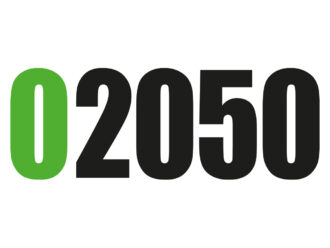Last year everything changed. Conventional investment wisdom lost its certainty as bond and equity valuations simultaneously fell while consumer prices jumped. Indeed, they more than doubled to almost 8% in Germany, Europe’s largest economy.
It is difficult therefore to omit the country when assessing the global investment markets. For that reason, we asked our sister publication, portfolio institutionell, if we could attend their annual conference to discover what the issues are for Germany’s institutional investors following such a tumultuous year.
The conference kicked off with Peter Bofinger, a professor of economics at the University of Würzburg, giving his view on whether the European Central Bank’s monetary policy is too restrictive. He concluded that the decisions the bank makes are, at times, too dependent on data. So where does this leave ESG, given that asset owners complain about a lack of disclosure.
Another issue is where should interest rates sit given the volatility witnessed in the bond and equity markets last year. Rising interest rates could provide lenders with a buffer against future volatility.
However, for Jim Caron, CIO for global balanced risk control at Morgan Stanley, there is no guarantee that the returns collected in the past few decades will be available in the years ahead.
He expects higher correlations and that 2022 will not be an isolated case. “We had a big bond bull market for 40 years – that should be over now,” he said. “Thus, in this new environment, there could be higher correlations over a three-year cycle and lower returns with volatility over five-to-10 years. “The 60:40 concept worked as long as bond yields fell,” Caron said. “In the future, 60:40 will just be a number.”
Dr Ulrich Kaffarnik, a director of fund manager DJE Kapital, agrees that return expectations should be scaled back. “But I don’t share the view that the correlation between stocks and bonds will remain high going forward. That’s why mixed portfolios like 60:40 will work well again in the future,” he said.
Going green: challenging times
No matter how portfolios are structured in the coming years, ESG is likely to play a role. Yet investors face issues on conflicting goals, regulation and data. Asset owners are becoming so sophisticated in this area that some have created their own scoring system to assess a corporate’s ESG profile.
These systems are not always positively viewed by asset managers, said René Hermanns, head of investment at the North Rhine Dental Association’s pension scheme. “Different providers treat ESG reporting differently,” Hermanns said, ranging from those who take ESG seriously to those who don’t.
BVV Versicherungsverein des Bankgewerbes, the €33bn insurance association of the banking industry, has developed its own ESG reporting system. Head of risk, Christian Wolf, said: “We started implementing a questionnaire in 2018, which was sent to all external managers in the illiquid area,” Wolf added. “Our questions were divided into policy, governance, ESG instruments and reporting.”
BVV now sends its questionnaire to all asset managers and is part of its due diligence for new investments.
The North Rhine Dental Association’s pension scheme, on the other hand, pursues a pragmatic and transparent approach. The scheme’s asset managers are regularly asked how they classify the assets in their portfolios.
“In numbers from one to 100, from one to five, or in school grades. That requires trust. If possible, the statement is confirmed by an auditor. That’s what we’re working towards,” Hermanns said.
The scheme then converts this information into an in-house ESG score based on its own formula. However, this procedure must also allow for assets with a weak ESG score. “In addition to the current score, the trend in movement is particularly important. If the path is right, the score gets better from year to year,” Hermanns said.
In sustainability, goals sometimes conflict, such as in real estate. Dr Jörg Mayer, head of finance at the Evangelical Lutheran Church in Braunschweig, found that in apartments and buildings rented by the church, there was a conflict of objectives between the social factor and earnings factor in renting below market value and meeting the parish’s financial obligations. This shows why it is important for investors to clearly communicate their goals: is the focus on the social component or on income?
On the subject of sustainability in real estate, Philipp Lehner, senior vice president and managing director at Alliance Bernstein, admitted that “the industry is struggling here”. Real estate per se is an “ESG offender” due to CO2-intensive materials such as concrete and steel. But energy efficiency is an area where the asset class is creating sustainability.
Safe as houses?
Property is a big topic among pension schemes and insurers, so it was not surprising that as a theme it continued throughout the conference. Rising interest rates, higher construction costs and shrinking values mean trouble for real estate in Germany. Indeed, real estate and infrastructure have been sought-after asset classes, but interest rate rises have made traditional interest-bearing securities more attractive again.
Yet infrastructure credit offers a good risk/return profile, and there are arguments for equity investments. “As an infrastructure equity investor, you have an upside,” said Charlotte Daelemans, senior real assets specialist at Nuveen.
Sebastian Dooley, senior fund manager at Principal Real Estate, touched on digitalisation. But data centres need for energy is immense. The industry is working to make their systems more climate friendly by signing power purchase agreements with wind farms or hydroelectric power plants. This turns conventional data centres into “green data centres”, he said.
From an ecological point of view, however, there is another problem: the sharp rise in energy prices, so data centres must continue to make their systems more efficient.
Dooley added that this is important because without ongoing digitalisation there will not be a green future. “I advise institutional investors to work with operators and investment managers to promote efficient data centre expansion, especially in mechanical and plant engineering.”
So data centres might be greener than you expect, but motorways are difficult to associate with the adjective “green”. Manuel Cary, founding partner and CEO of transport infrastructure investment manager TIIC, admitted that roads have a negative impact on the environment as green areas have to give way for the construction of the asphalt strips.
But work is being undertaken to minimise the damage to the environment through building automated toll roads where drivers save fuel by not having to stop to pay the toll.
Inflation protection was also on the agenda with Cary saying: “I’ve supported the theory that infrastructure serves as a hedge against inflation. But for a long time I didn’t have the opportunity to prove that. Now asset valuations have benefited from the rise in inflation.”
When asked what “the next big thing in infrastructure will be” aside from decarbonisation and electrification, Cary outlined two short-term trends in Europe. One is the increasing use of the railways for freight as trucks are inefficient.
Second, he sees a trend in the intersection of climate change, infrastructure and water management. “It’s not just about using less water in agriculture. It’s about how you deal with the fact that it will rain heavily in a short time as a result of climate change and you have to catch the water somehow?”
For Cary, solving this will require enormous investment. “That’s going to be a big revolution in infrastructure,” he said. In view of rising interest rates, falling valuations in some real estate segments, there is great uncertainty among investors where fair value is concerned. This is reflected in the lack of transactions with buyers and sellers rarely coming to an agreement currently, in favour of a wait and see approach.
Concrete gold
Is “concrete gold” now losing its lustre after some residential and commercial properties as well as riskier developments changed hands at dizzying prices but are now threatened by valuation corrections.
When asked whether real estate would become a “problem child” in the future, the participants, including Thomas Gut, head of real estate at Hamburg Pensionsverwaltung, unanimously opted for “concrete gold”.
While Gut sees opportunities for diversification “in the current situation of re-pricing”, Dr Miriam Esders, a sustainability specialist at project developer Freo, stated that real estate could become a problem child thanks to poor ESG quality. “But if you do it right, we have a chance at concrete gold. We are of the opinion that sustainable development and investment does not have to mean less return,” Esders said.
These can both be achieved through carrying out the energy renovation by using technology to lower costs. “There are some challenges that we can only successfully meet by thinking outside the box,” she said, referring to climate change.
Following a difficult time last year, and with questions about how return can be earned, it is now business as usual for Germany’s institutional investors in making assets greener and driving digitialisation in Europe’s largest economy.





Comments